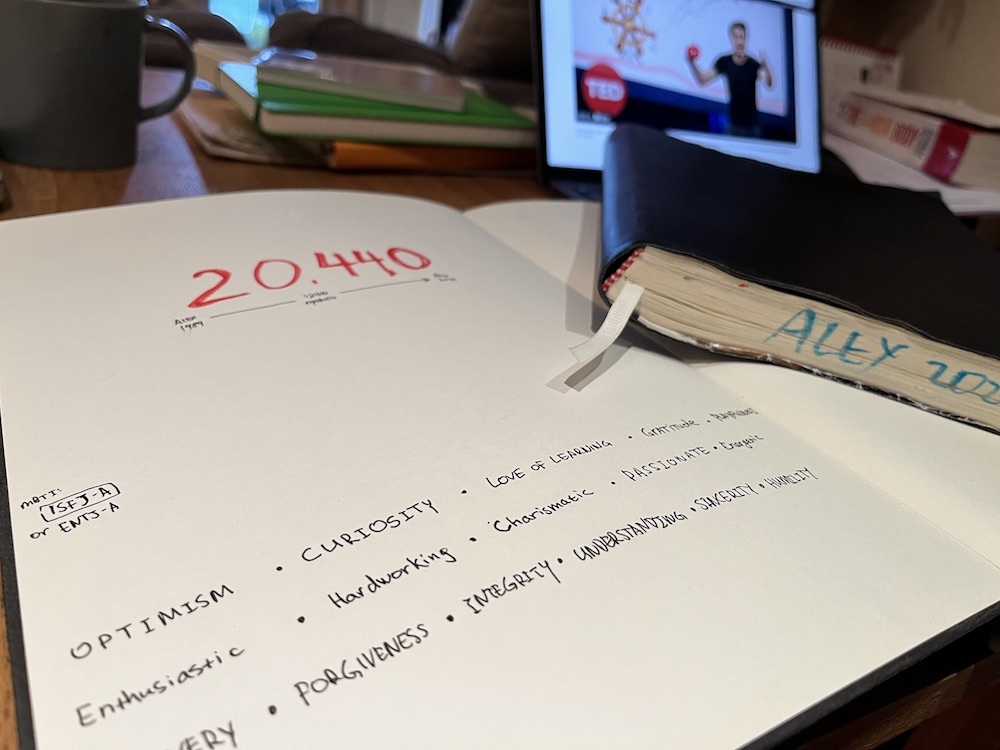Journaling
“We are almost like antennas, and around us all there are thousands of vibrations and thoughts which enter our minds. When you are driving your car, all the radio stations, and their waves are hitting your car and your antenna outside. But it’s the station you put on the radio that blocks off the rest of them and lets one come in. Same thing with your mind. All around you there are vibrations of success and failure, health and sickness, positive and negative. We need to learn how to tune our “radio station”, to choose “music” in our lives.”
Mestre Cueca
Journaling is another powerful tool, which I use every day. For me, it’s a form of active meditation. I do it for clarity, for self-improvement, and to enhance my creativity. There are many techniques you can try. I’m going to share the few I use.
One quick note: I journal “old-school” by writing notes with my hand. Just me, pen, and paper. No devices, no distractions.
Freewriting & Morning Pages
Freewriting is a technique in which the author writes their thoughts quickly and continuously, without worrying about form, style, or even grammar. Alongside brainstorming, freewriting is typically used early in the writing process to collect and manifest one’s thoughts.
This was how I started journaling after many failed attempts in the past. In her book “The Artist’s Way” Julia Cameron calls it “morning pages”. The idea is to write three pages of “longhand, stream of consciousness writing, done first thing in the morning.” Do not overthink it. Just put three pages of anything on the page. Every day.
Tuning your radio
If the “Morning Pages” is more of an unlimited mindflow on paper, the next one is a more structured, affirmation-like approach. It was introduced to me by Timor Klinghofer (Mestre Cueca), my capoeira master. The idea is to “set your radio for the day” and write how you see yourself in five years from now in these five aspects of life:
- Health: physical, emotional, and spiritual health. Your vision on your health in the future. Maybe there are some issues you want to fix or improve?
- Relationships: with spouses, kids, parents, with the closest circle in your life. How would you imagine your relationships in five years?
- Financials: how are your finances looking in five-year time? Do you have a house? Are you saving? “It doesn’t need to be connected to reality, you might be living in a hole right now, and that’s exactly why you are starting this today.”
- Career: it has more to do with your professional path and achievements in other parts of your life. What do you want to do specifically in your career?
- Gratefulness: what are you thankful for?
I write 1-2 pages for 5-10 minutes. I write it every day. It can be the same thing over and over. This way I make sure I have a clear vision of where I want to be, how I want to be in five years. Of course, with time, my priorities might shift, so I would also write it down.
2023 update: currently I use “journaling” slot in my schedule mostly for writing for my #50days50lessons challenge. But I would still “tune my radio” from time to time, al least once a week.
Journaling like Pro
If you want to take your journaling habit to the next level, then watch this video by Clark Kegley. The idea is to get a thick journal and divide it in 5-6 sections and work on its front cover and back cover.
Sections. Choose 4-5 journal sections that means something to you. It’s where you will be storing your thoughts, ideas, and quotes. For example, now I have only four sections:
- Book notes - where I do a 1-page summary of books I read
- Business notes - ideas and projects
- Freewriting - my morning pages are here
- Capoeira - since it’s my biggest passion, I have a special section for this too.
The front cover. Once I open my journal, I see the number “20440”. In 2023, that’s approximately how many days left till my 90th anniversary. This is a good reminder, and I update it every year.

A little doomy? Watch this TED talk (53 million views!) by Tim Urban, or read his post “Your Life in Weeks”.
On the other side of the front cover, I write top lessons from the year. It could be a quote that inspired me, or a motto.
The back side. The last few pages of my journal contains my manifesto, a habit tracker for each month, and goals. These three are working together:
- My future me I want to be
- a system of habits which will lead me to it
- and important milestones (the goals).